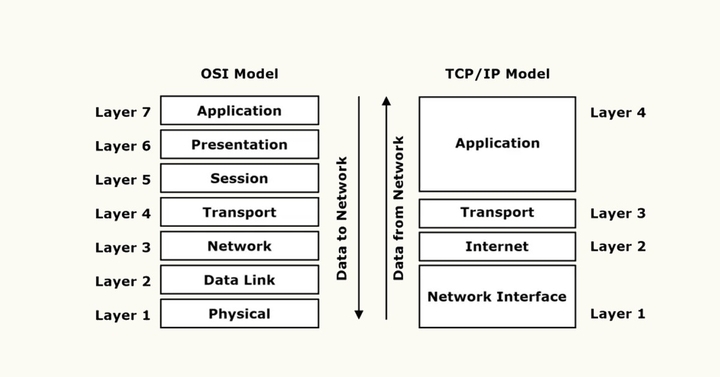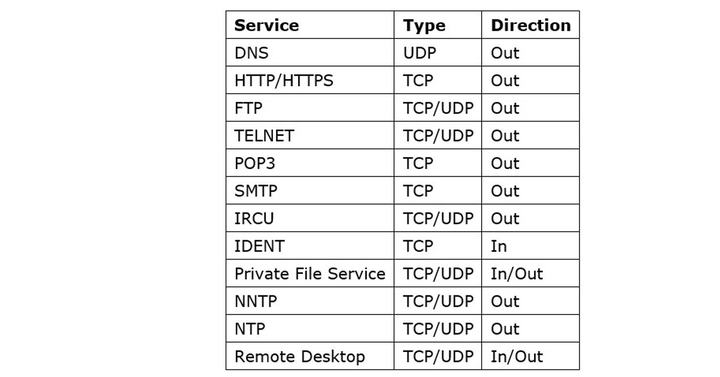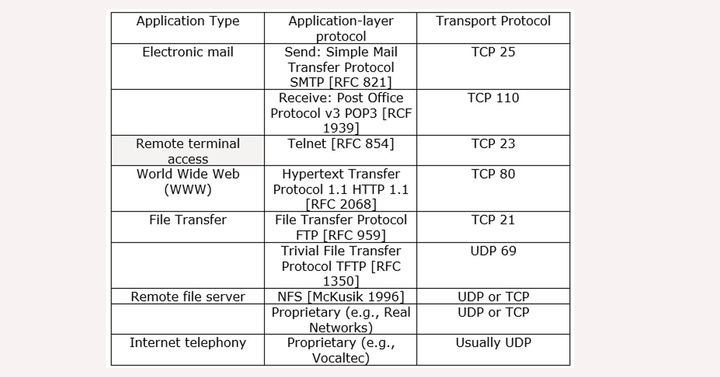Application Layer Protocols
By BYJU'S Exam Prep
Updated on: September 25th, 2023

Application layer protocols define how application processes (clients and servers), running on different end systems, pass messages to each other. In particular, an application layer is an abstract layer that handles the sharing protocol of the TCP/IP and OSI model.
In this article, we further define various types of application layer protocols. The purpose of application layer protocols is that users can send data, access data, and use networks. The application layer also makes communication easier and sometimes allows users to use software programs.
Table of content
What is the Application Layer?
The application layer is the topmost layer of the OSI and TCP/IP models. The application layer in the TCP/IP model is created by combining the top three layers: the application layer, the presentation layer, and the session layer.
Application Layer Protocols PDF
An application layer is an abstraction layer that specifies the shared communications protocols and interface methods that host in network use. It is the layer closest to the end user, implying that both the application layer and the end user can interact with the software application directly.

Application Layer Protocols
The application layer protocols used to make communication between sender and receiver faster, more efficient, reliable, and secure. These protocols will be discussed further below.
- SMTP
- TELNET
- FTP
- MIME
- POP
- HTTP
- DNS
Simple Mail Transfer Protocol(SMTP)
One of the most popular application layer protocols for network services is electronic mail (e-mail). The TCP/IP protocol that supports electronic mail on the Internet is called Simple Mail Transfer Protocol (SMTP).
SMTP transfers messages from senders’ mail servers to the recipients’ mail servers using TCP connections. In SMTP, users are based on e-mail addresses. SMTP provides services for mail exchange between users on the same or different computers.
Following the client/server model:
- SMTP has two sides: a client-side, which executes on a sender’s mail server, and a server-side, which executes on the recipient’s mail server.
- Both the client and server sides of SMTP run on every mail server.
- When a mail server sends mail (to other mail servers), it acts as an SMTP client.
- When a mail server receives mail (from other mail servers), it acts as an SMTP server.
Terminal Network(TELNET)
TELNET is an application layer protocol in which a client-server application allows a user to log onto a remote machine and lets the user access any application program on a remote computer. TELNET uses the NVT (Network Virtual Terminal) system to encode characters on the local system.
On the server (remote) machine, NVT decodes the characters to a form acceptable to the remote machine. TELNET is a protocol that provides a general, bi-directional, eight-bit byte-oriented communications facility. Many application protocols are built upon the TELNET protocol. Telnet services are used on PORT 23.
File Transfer Protocol(FTP)
FTP is the standard mechanism provided by TCP/IP for copying a file from one host to another. FTP differs from other client-server applications because it establishes 2 connections between hosts. Two connections are Data Connection and Control Connection.
Data Connection uses PORT 20, and control connection uses PORT 21. FTP is built on a client-server architecture and uses separate control and data connections between the client and the server. One connection is used for data transfer, the other for control information (commands and responses). The FTP is data reliably and efficiently.
Multipurpose Internet Mail Extensions (MIME)
The Multipurpose Internet Mail Extensions (MIME) is an extension of SMTP that allows the transfer of multimedia messages. If binary data is included in a message, MIME headers are used to inform the receiving mail agent that is as follows:
- Content-Transfer-Encoding: The header alerts the receiving user agent that the message body has been ASCII encoded and the type of encoding used.
- Content-Type: The header informs the receiving mail agent about the type of data in the message.
Post Office Protocol(POP)
POP(Post Office Protocol) is also called the POP3 protocol. This is a protocol used by a mail server in conjunction with SMTP to receive and holds mail for hosts.POP3 mail server receives e-mails and filters them into the appropriate user folders.
When a user connects to the mail server to retrieve his mail, the messages are downloaded from the mail server to the user’s hard disk.
Hypertext Transfer Protocol(HTTP)
Hypertext Transfer Protocol(HTTP) is used mainly to access World Wide Web (www) data. The Hypertext Transfer Protocol (HTTP) is the Web’s main application-layer protocol, although current browsers can access other types of servers. A repository of information spread all over the world and linked together.
The HTTP protocol transfers data in plain text, hypertext, audio, video, etc. HTTP utilizes TCP connections to send client requests and server replies. It is a synchronous protocol that works by making both persistent and non-persistent connections.
Domain Name System(DNS)
In Domain Name System(DNS), TCP/IP protocol uses the IP address that uniquely identifies a host’s connection to the Internet to identify an entity. DNS is a hierarchical system based on a distributed database that uses a hierarchy of Name Servers to resolve Internet host names into the corresponding IP addresses required for packet routing by issuing a DNS query to a name server.
DNS in the Internet: DNS is a protocol that can be used on different platforms.
Domain name space is divided into three categories.
- Generic Domain: The generic domain defines registered hosts according to their generic behavior. Each node in the tree defines a domain which is an index to the domain name space database.

- Country Domain: The country domain section follows the same format as the generic domain but uses 2 characters of country abbreviations (e.g., the US for the United States) instead of 3 characters.
- Inverse Domain: The inverse domain maps an address to a name.
Overview of Services

Application Layer Protocol Examples
Examples of application layer protocols include the X.400 Message Handling Service Protocol allowing email transfer between compatible systems.
- The Simple Network Management Protocol (SNTP) provides remote host management.
- Use the Hypertext Transfer Protocol (HTTP) for message or text communications.
- To accept and store mail for hosts, a mail server employs the POP (Post Office Protocol) protocol in conjunction with SMTP.



